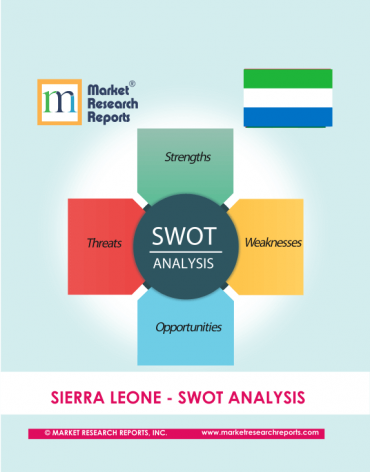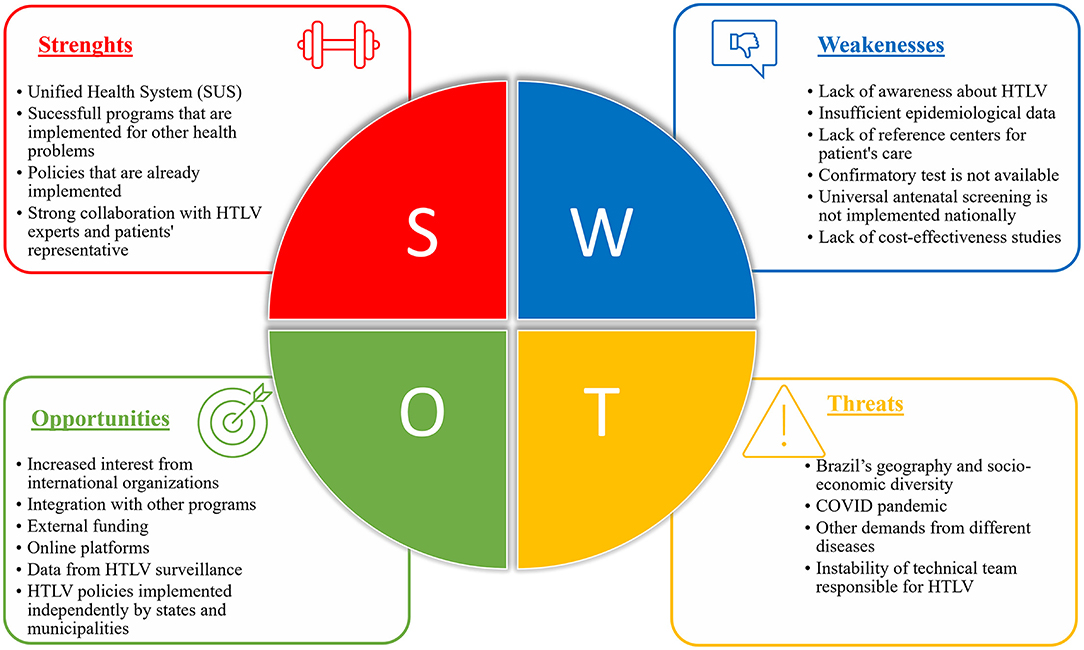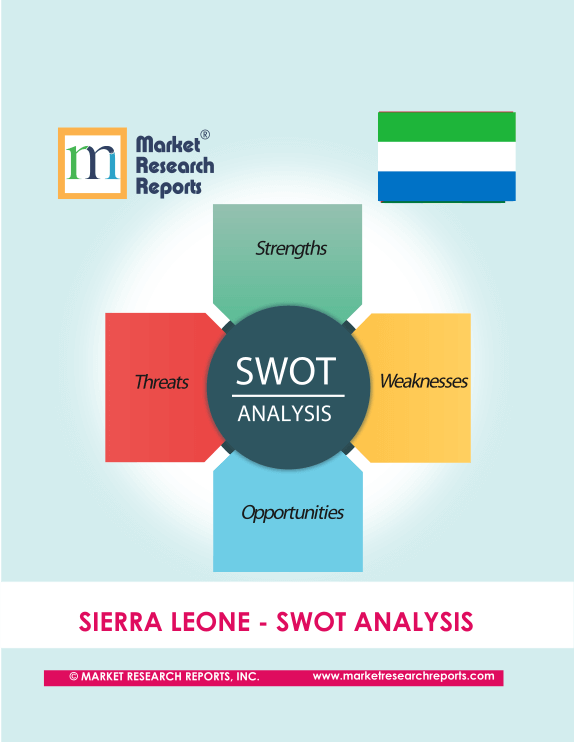AI Conversation
Education System SWOT analysis in Sierra Leone

One fun fact about the education system SWOT analysis in Sierra Leone is that it identified opportunities for collaboration with international organizations to improve infrastructure and access to education for all children in the country.
https://www.youtube.com/watch?v=cCyoVZ91CS8
strengths
https://www.youtube.com/watch?v=hESZFx2VEe4
Sierra Leone's education system strengths include a growing emphasis on improving access to education for all children, increased investment in infrastructure and resources, and a commitment to enhancing teacher training and professional development. These strengths provide a solid foundation for continued progress and development in the education sector.

weaknesses
https://www.youtube.com/watch?v=M-D6DbJswR4

Weaknesses in Sierra Leone's education system include inadequate infrastructure, lack of qualified teachers, limited access to quality education in rural areas, low literacy rates, and insufficient funding. These weaknesses hinder the overall effectiveness and quality of education in the country, impacting student learning outcomes.
opportunities
https://www.youtube.com/watch?v=u5vxrc2qrEo

Opportunities within Sierra Leone's education system SWOT analysis include potential for increased funding from international donors, partnerships with NGOs to improve infrastructure, and advancements in technology for remote learning. These opportunities can lead to enhanced access to quality education for all students in the country.
threats

https://www.youtube.com/watch?v=glOSCymI6AQ
Threats within the education system in Sierra Leone include inadequate funding, lack of qualified teachers, poor infrastructure, and limited access to quality education. These challenges hinder the overall effectiveness and quality of education in the country, impacting the future prospects of students and the development of the nation.
curriculum development

https://www.youtube.com/watch?v=QvVkEvDpwRw
Curriculum development in Sierra Leone's education system faces strengths such as government support and community involvement, but also weaknesses like limited resources and outdated materials. Opportunities for improvement include teacher training and technology integration, while threats include political instability and funding constraints.
teacher training
.png?width=750&name=Faculty%20SWOT%20Analysis%20(1).png)
https://www.youtube.com/watch?v=lbiKj06Vafk
Teacher training in Sierra Leone's education system faces strengths such as dedicated educators and government support, but also weaknesses like limited resources and infrastructure. Opportunities for improvement include increased funding and partnerships, while threats include political instability and lack of access to quality training programs.
government support
https://www.youtube.com/watch?v=nN2bLsIDfVg
Government support in Sierra Leone's education system includes funding, infrastructure development, and policy implementation. Strengths include increased access to education and improved quality of teaching. Weaknesses include inadequate resources and lack of teacher training. Opportunities for improvement include increased investment in education and better coordination between government agencies.
community involvement
https://www.youtube.com/watch?v=b6_YVsuyUEM
Community involvement in Sierra Leone's education system is a strength, as it fosters collaboration and support for schools. However, lack of resources and infrastructure pose a threat. Opportunities exist for partnerships with community organizations, while the challenge lies in addressing the needs of marginalized communities.
AI Report
Essay
The education system in Sierra Leone has undergone significant changes in recent years. In this essay, we will conduct a SWOT analysis of the current education system in Sierra Leone, highlighting its strengths, weaknesses, opportunities, and threats.
Strengths:
The education system in Sierra Leone has made significant progress in terms of access and enrollment. According to the World Bank, the primary school enrollment rate in Sierra Leone has increased from 67% in 2001 to 81% in 2018. This increase can be attributed to the government's efforts in providing free primary education since 2010. Additionally, the government has also invested in building and renovating schools, which has improved the learning environment for students.
Furthermore, the education system in Sierra Leone has a strong emphasis on adult literacy programs. According to UNESCO, the adult literacy rate in Sierra Leone has increased from 35% in 1991 to 48% in 2018. This is a significant achievement, considering the country's low literacy rate at the start of the century. The government's commitment to promoting adult literacy has played a vital role in this improvement.
Weaknesses:
One of the main weaknesses of the education system in Sierra Leone is the lack of quality education. Despite the increase in enrollment rates, the quality of education remains low. The country's primary school completion rate is only 56%, indicating a high dropout rate. This is due to various reasons, including inadequate infrastructure, lack of qualified teachers, and a shortage of teaching materials.
Moreover, the education system in Sierra Leone is heavily reliant on external aid and funding. This makes the system vulnerable to changes in foreign aid policies and can affect the sustainability of the education sector in the long run. The lack of financial resources also hinders the government's ability to invest in improving the quality of education.
Opportunities:
One of the major opportunities for the education system in Sierra Leone is the potential for technological advancements. With the increasing availability of technology and internet access, there is an opportunity to integrate technology into the education system. This can improve access to information, enhance teaching methods, and provide a more interactive learning experience for students.
Another opportunity is the growing demand for skilled labor in the country. The government can use this opportunity to focus on vocational and technical education, providing students with the necessary skills to meet the demand for skilled workers in various sectors. This can also contribute to reducing the high unemployment rate in the country.
Threats:
The main threat to the education system in Sierra Leone is the ongoing political instability and economic challenges in the country. The education sector has been greatly affected by the civil war and the Ebola epidemic, which have disrupted the education system and caused a decline in the quality of education. Additionally, the country's economic struggles have led to a decrease in government funding for the education sector, making it difficult to implement necessary reforms and improvements.
In conclusion, the education system in Sierra Leone has shown significant progress in terms of access and literacy rates. However, there are still major challenges that need to be addressed, such as the quality of education and the reliance on external funding. To overcome these challenges, the government must focus on investing in infrastructure, improving teacher training, and diversifying the education system to meet the country's growing needs. With proper planning and implementation, the education system in Sierra Leone can continue to improve and provide better opportunities for its citizens.
References:
The World Bank. (2019). Sierra Leone. Retrieved from https://data.worldbank.org/country/sierra-leone
UNESCO. (2018). Sierra Leone. Retrieved from https://en.unesco.org/countries/sierra-leone/education
Lesson Plan
Lesson Title: Understanding SWOT Analysis in the Education System of Sierra Leone
Grade Level: Technical Vocational Students
Subject: Social Studies
Time Frame: 60 minutes
Objective:
Students will be able to analyze the strengths, weaknesses, opportunities, and threats of the education system in Sierra Leone through a SWOT analysis.
Materials:
- PowerPoint presentation
- Handouts with SWOT analysis template
- Whiteboard and markers
- Laptop/computer with internet access
Warm-up (5 minutes):
- Begin the lesson by asking students about their knowledge of the education system in Sierra Leone.
- Discuss with students why it is important to analyze the education system of a country.
- Introduce the concept of SWOT analysis and ask if anyone has heard of it before.
Direct Instruction (15 minutes):
- Use the PowerPoint presentation to explain what SWOT analysis is and its purpose.
- Present the SWOT analysis template and explain each component (strengths, weaknesses, opportunities, and threats).
- Provide examples of each component related to the education system in Sierra Leone.
- Emphasize the importance of being objective and unbiased while conducting a SWOT analysis.
Guided Practice (20 minutes):
- Divide students into groups of 4-5.
- Distribute handouts with the SWOT analysis template.
- Assign each group a specific aspect of the education system in Sierra Leone (e.g. primary education, secondary education, tertiary education, vocational education).
- Instruct students to fill in the SWOT analysis template for their assigned aspect.
- Circulate the classroom to provide guidance and answer any questions.
Independent Practice (15 minutes):
- Ask each group to present their SWOT analysis to the class.
- Encourage students to ask questions and provide feedback to each group.
- Facilitate a class discussion on the similarities and differences between the SWOT analyses of different aspects of the education system.
Closure (5 minutes):
- Summarize the key points of the lesson and the importance of conducting a SWOT analysis.
- Ask students to reflect on what they have learned and how it can be applied in their future studies or career.
Assessment:
- Observe students' participation during the group work and class discussion.
- Evaluate students' understanding of SWOT analysis through their completed handouts.
- Ask students to write a short reflection on what they have learned and how it can be applied in real-life scenarios.
Extension:
- Assign students to research and analyze the SWOT of the education system in a different country.
- Encourage students to think about potential solutions to address the weaknesses and threats identified in the SWOT analysis.
Homework:
- Ask students to conduct a SWOT analysis of the education system in their own country and to compare it with the analysis of Sierra Leone's education system.
Class Syllabus Outline
Course Title: Education System SWOT Analysis in Sierra Leone
Course Description:
This course will provide an in-depth analysis of the education system in Sierra Leone through a SWOT (Strengths, Weaknesses, Opportunities, and Threats) framework. Students will gain a comprehensive understanding of the current state of education in Sierra Leone, identify the key challenges and opportunities, and explore potential strategies for improvement. The course will also cover the historical, social, and cultural factors that have shaped the education system in Sierra Leone.
Course Objectives:
- Understand the history and current state of the education system in Sierra Leone
- Identify the strengths and weaknesses of the education system in Sierra Leone
- Explore the opportunities and threats facing the education system in Sierra Leone
- Develop critical thinking skills through the analysis of the education system
- Propose potential strategies for improvement of the education system in Sierra Leone
Course Duration: 12 weeks
Class Schedule:
Classes will be held once a week for 2 hours.
Course Outline:
Week 1: Introduction to the Education System in Sierra Leone
- Historical background of the education system in Sierra Leone
- Current structure of the education system
- Key stakeholders and their roles in the education system
Week 2: Strengths of the Education System
- Access to education for all
- Free primary and secondary education
- Availability of government support and policies
- Success stories and achievements in the education system
Week 3: Weaknesses of the Education System
- Limited access to quality education in rural areas
- Lack of adequate infrastructure and resources
- Low teacher salaries and high teacher turnover rate
- Outdated curriculum and teaching methods
Week 4: Opportunities in the Education System
- Potential for partnerships and collaborations
- Use of technology in education
- Increasing demand for skilled workforce
- Growing awareness and support for education by the government and NGOs
Week 5: Threats to the Education System
- Poverty and economic challenges
- Political instability and conflict
- Gender inequality in education
- Brain drain and shortage of qualified teachers
Week 6: SWOT Analysis of the Education System in Sierra Leone
- Group activity: SWOT analysis of the education system in Sierra Leone
- Discussion and presentation of findings
Week 7: Impact of Socio-Cultural Factors on Education in Sierra Leone
- Influence of traditional beliefs and practices on education
- Gender roles and their impact on education
- Role of religion in education
Week 8: Education Policies and Reforms in Sierra Leone
- Overview of past and current policies and reforms in the education system
- Assessment of their effectiveness in addressing the challenges and opportunities
- Comparison with education policies in other countries
Week 9: Case Study: Successful Education System in a Developing Country
- Analysis of an education system in a developing country with similar challenges as Sierra Leone
- Identification of key strategies for success
- Lessons learned for Sierra Leone's education system
Week 10: Strategies for Improving the Education System in Sierra Leone
- Group activity: Brainstorming session for potential strategies
- Discussion and evaluation of proposed strategies
Week 11: Implementation and Challenges in Improving the Education System
- Factors to consider in implementing strategies
- Potential challenges and ways to overcome them
- Role of different stakeholders in the implementation process
Week 12: Final Presentations
- Group presentations of proposed strategies for improving the education system in Sierra Leone
- Feedback and discussion
Evaluation:
- Class participation: 20%
- Group activities and presentations: 40%
- Final paper/project: 40%
Resources:
- Textbook: "Education in Sierra Leone: Present Challenges, Future Opportunities" by Dr. Kadi Sesay
- Articles and reports on education in Sierra Leone
- Case studies of successful education systems in developing countries
- Government policies and reports on education in Sierra Leone
Grading Scale:
A: 90-100
B: 80-89
C: 70-79
D: 60-69
F: Below 60
Note: Attendance is mandatory and more than 3 absences will result in a deduction of 5 points from the final grade.
Course Policies:
- Respectful and professional behavior is expected at all times.
- Assignments and projects must be submitted on time. Late submissions will result in a deduction of 5 points per day.
- Plagiarism will not be tolerated and will result in a failing grade for the assignment or project.
Disclaimer:
The course outline and schedule may be subject to change based on the needs of the class and the availability of resources. Any changes will be communicated in a timely manner.
Learning Objectives
1. Understand the concept of SWOT analysis and its application in evaluating the education system in Sierra Leone.
2. Identify the strengths of the education system in Sierra Leone, including its resources, infrastructure, and curriculum.
3. Analyze the weaknesses of the education system in Sierra Leone, such as lack of access to quality education, inadequate funding, and outdated teaching methods.
4. Recognize the opportunities for improvement in the education system, such as increasing enrollment rates and incorporating technology in teaching.
5. Evaluate the threats facing the education system in Sierra Leone, such as political instability and economic challenges.
6. Develop strategies to address the weaknesses and threats and capitalize on the strengths and opportunities of the education system in Sierra Leone.
7. Understand the role of vocational education in enhancing the overall education system of Sierra Leone.
8. Analyze the current vocational education programs in Sierra Leone and their effectiveness.
9. Explore potential areas for improvement and growth in vocational education in Sierra Leone.
10. Develop a comprehensive SWOT analysis report on the education system in Sierra Leone, incorporating the perspectives of technical vocational students.
Quiz Questions
1. What is the main strength of Sierra Leone's education system?
a) High enrollment rates in primary education
b) Availability of modern technology in schools
c) Well-trained and qualified teachers
d) Broad range of vocational education opportunities
Answer: c) Well-trained and qualified teachers
2. Which of the following is a potential weakness in Sierra Leone's education system?
a) Access to education for children in rural areas
b) High literacy rates among adults
c) Government investment in infrastructure
d) Emphasis on traditional teaching methods
Answer: a) Access to education for children in rural areas
3. What is the main opportunity for improvement in Sierra Leone's education system?
a) Increasing government funding for education
b) Incorporating more practical and hands-on learning experiences
c) Implementing a standardized national curriculum
d) Improving teacher salaries and benefits
Answer: d) Improving teacher salaries and benefits
4. Which of the following is a potential threat to the education system in Sierra Leone?
a) Growing economy and increasing job opportunities
b) Limited access to quality education for students with disabilities
c) Strong partnerships with international organizations
d) High teacher retention rates
Answer: b) Limited access to quality education for students with disabilities
5. How do Sierra Leone's education system's weaknesses compare to other countries in the region?
a) They are on par with other countries
b) They are significantly worse
c) They are significantly better
d) They do not have any weaknesses
Answer: b) They are significantly worse